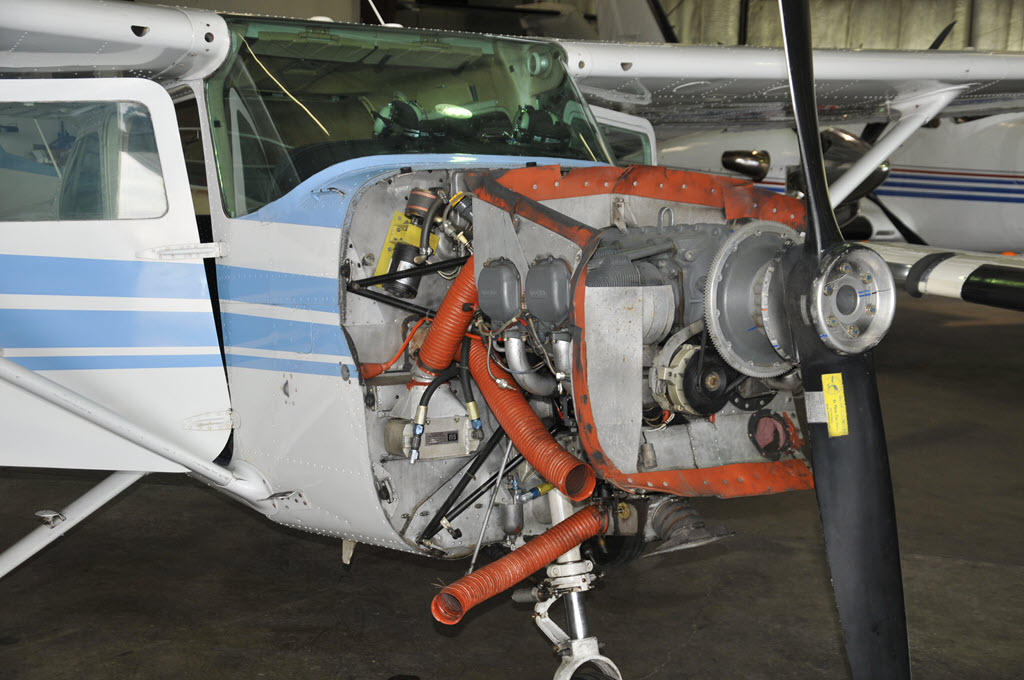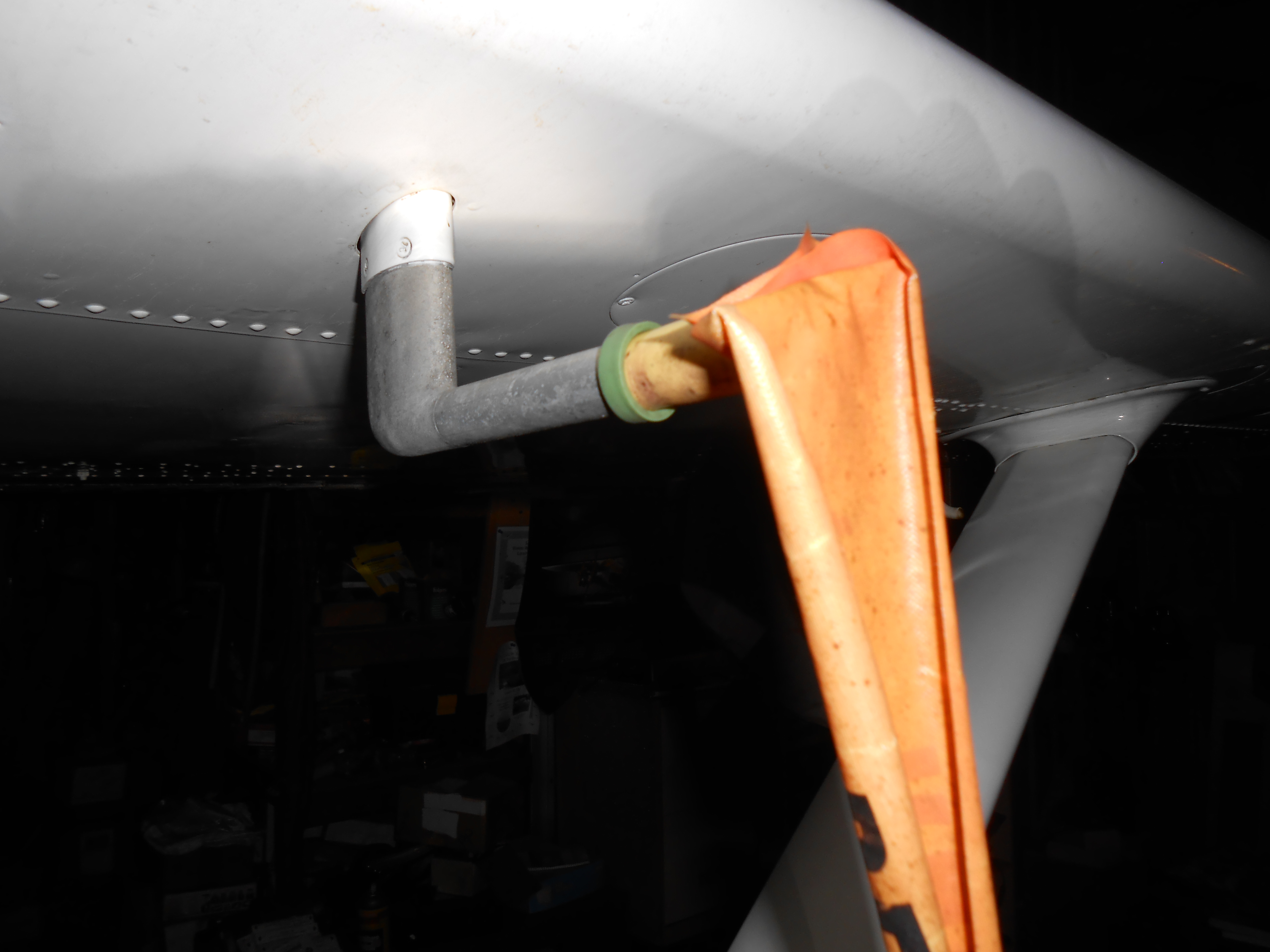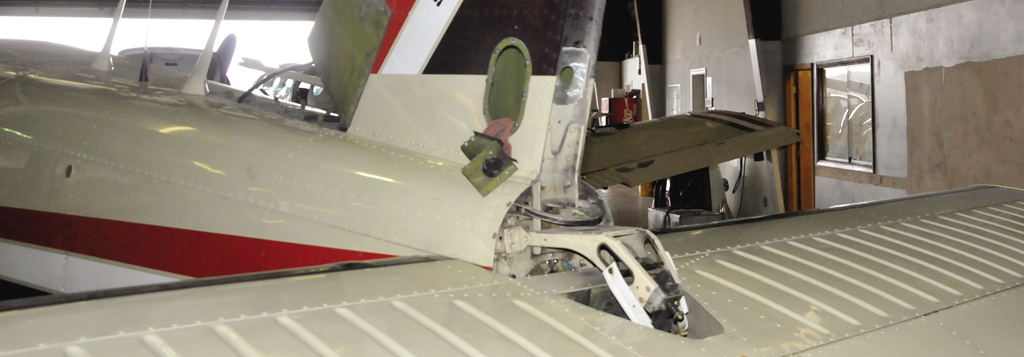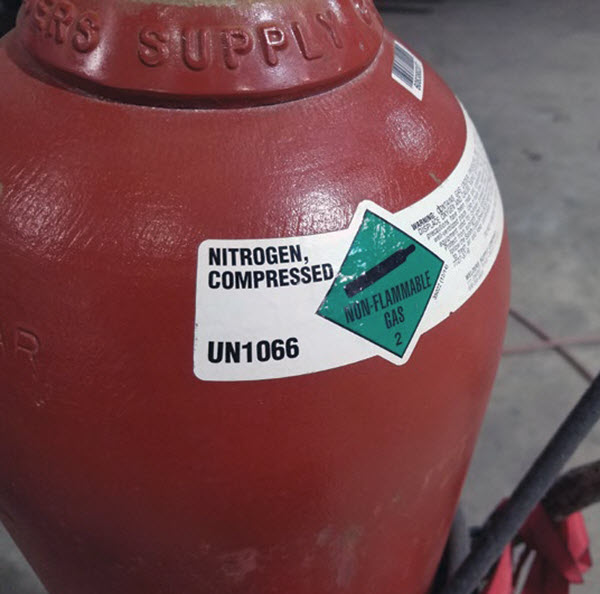What Your Oil, Spark Plugs, and EGT Gauge Are Trying to Tell You
Today’s task is to learn how to listen and watch for the signs that your aircraft engine throws your way. Engines tend to be gabby, but they sometimes speak very softly.
Oil Issues
There are oil usage specs out there for each and every piston engine that pull aviators around the sky but the rule of thumb is anything less than one quart per hour doesn’t require immediate action. That said, most of us get nervous anytime we use more than a quart every 3-4 hours and all of us get very anxious when a previously “tight” engine starts leaking oil. Finally, removing a spark plug and finding the business end covered with thick, black oil generally renders us apoplectic and unfit to be around for days.
What’s an engine trying to tell us when it weeps oil, burns oil, or coats spark plugs with oil?
Oil Usage
If compression is good on all the cylinders but oil is disappearing, the first thing to determine is if there’s a point – somewhat lower than a full crankcase – where the oil loss stops.
In most engines there will be a loss of oil in the first few hours after an oil change, but it will stabilize somewhere around a half quart and a full quart below the full mark. The missing oil has disappeared but it doesn’t matter.
You’ve just got an engine that’s happiest running half to one quart low and there’s no point in fighting it because it’ll win the argument every time.
But if you have a constant oil loss and the compression on one or more cylinders is in the 65/80 range or less, you probably do have a cylinder that is going to need to be reworked. The question then becomes how much oil loss and/or loss of compression are you willing to live with? For me, a quart an hour and compression below 60/100 is all I’m going to put up with. Once I have either or both of these numbers present, I’m done with the cylinder(s) in questions.
But that’s a constant situation. What about an engine that suddenly develops oil loss problems?
In that case, wait five hours and check it again. It’s common for the rings to rotate around a piston and occasionally they’ll line up in such a way that the oil can find an easy path to the outside. (The crankcase gets pressurized when this happens and the oil goes out the breather).
Normally the engine speaks to you by generously coating the underside of your airplane with oil. Of course, this can happen over time with worn-out cylinders as well, but we’re talking about “sudden onset” oil usage.
The point here is this: If your engine has been behaving itself and all the sudden the oil usage goes way up, don’t jump to the conclusion you have to immediately replace a cylinder. Instead, have your A&P take a look just to err on the side of safety. Tell him your theory about the migrating rings and if you get agreement, wait it out for five hours before taking any action.
Weeps, Drips, and Leaks
Oil leaks are another source of consternation, but all leaks are not created equal – there are weeps, drips, and leaks. On the surface, a weep would seem to be less potential trouble than either a drip or a leak. But that’s not always the case.
If you own a pressurized Cessna Skymaster, Piper Seneca II or III, Piper Turbo Arrow, or maybe a Moonie 231, you’re likely driving around with a Continental TSIO 360 engine and these engines have to be watched for very small oil leaks on the back side of the cylinder’s rocker box. Difficult to see, a tiny crack here (and the resultant oil weep) is an early warning that a cylinder is about to fail, perhaps catastrophically.
Fortunately, such a thing is the exception to the rule though and normally a weep can be ignored until TBO.
A drip often comes from the front side of the rocker box and can often be stopped by your A&P. Another source is the case seam – and that one is a bit tougher to stop. Other than cleaning the engine more often, a case seam weep or small drip normally doesn’t require any action until TBO either. You do want to keep the engine free of exterior oil. Oil will burn, you know.
This brings us to the last category – the leak. A leak can be a minor annoyance or it can be reason for immediate concern. For a leak, you have to get your A&P by the hand and lead him or her over to have a look-see. Pay attention to the advice given. A leak, particularly one that comes from a difficult-to-see location, can be a disaster waiting to happen.
Oily Spark Plugs
When you remove sparkplugs, make sure you note the cylinder they came out of and the position (top or bottom) in the cylinder. An oily plug in the bottom hole of a cylinder is not necessarily a sign of oil-usage problems. Just taxiing in can cause oil to collect in the bottom of a cylinder and even foul a plug.
If you have good compression, don’t overreact to oily plugs that came out of the bottom hole. But don’t dismiss it, either. You may have ignition problems.
Ignition problems? Yes. Strange though it may seem, a plug that isn’t firing properly can cause an oily plug. The reason for this is the combustion process isn’t as complete with only one plug firing so the amount of force developed against the top of the piston isn’t as great. This translates to less pressure on the rings as the piston travels and oil can be forced upwards into the combustion chamber, particularly in a taxi situation.
In the absence of compression deficiencies, suspect a marginal plug or a plug wiring problem when you have oil on a bottom plug only.
Oil on a top plug usually is accompanied by diminished compression. You’ll often have both plugs covered with oil in this case and you’re going to have to do a top overhaul on at least one cylinder. If the compression is still good, you’ll want to look for ignition problems before thinking about pulling cylinders off the engine.
Fuel Issues
The single best preventative maintenance event affecting fuel is to clean all the fuel filters. You may have to become better acquainted with your airframe and engine service manuals to find out where to look, but there are usually filters somewhere outside the engine plumbing as well as filters within the plumbing.
In my case, the Seneca has filters in the wings for each engine plus the TCM fuel injection systems have additional filters.
Both fuel-injected engines and engines with carburetors normally have fuel strainers and you need to clean all of them every 100 hours or at annual. Check out the service manual and talk to your A&P to learn where the filters are located.
Watching the Gauges
The EGT gauge is an excellent tool for troubleshooting fuel delivery problems. Even if you only have a single-probe version, you can look for early signs of trouble by watching your EGT gauge when there are no problems so you’ll know what an anomaly looks like when you see it.
If you have a multi-probe instrument, you can spot plugged fuel injectors quickly. You’ll notice very different readings on the affected cylinder than you’re used to seeing when an injector catches a piece of dirt in its bore.
There’s a “gotcha” on multi-probe EGTs though: Be careful assuming the hottest cylinder is the leanest cylinder. The leanest cylinder will peak first but it’s possible for another cylinder to run hotter and overtake the one that peaked first. The way the engine cooling is routed can cause this situation and problems here may be a good reason to check out the condition of the baffling. Ideally, you’d want the leanest cylinder to also be the hottest.
Bendix fuel servo systems (Lycoming fuel-injected engines) are pretty bulletproof but when they fail, they normally fail in the full rich position. If your engine has excessive RPM rise at shutdown as you pull the mixture aft, (more than 200 RPM), your engine is running very rich and a misadjusted or failed Bendix fuel servo may be the culprit.
The same RPM rule applies to TCM fuel-injected engines and engines with carburetors. You should definitely get a small rise in the engine speed at shutdown but the operative word here is small (50 RPM is ideal). No rise means you’re (at the least) idling a bit lean; an excessive rise means your mixture is too rich.
By the way, if you fly a twin and the fuel flow is not identical on both engines for the same power and mixture settings, don’t worry about it. Fuel flow gauges are measuring pressure, not fuel flow, and infer the gallons per hour from the pressure. If you have a twin that is performing well in all other respects and burns the same amount of fuel each side (within a gallon an hour or so) for the same operational adjustments, it’s not worth chasing around trying to make the gauges read the same since a little air in one of the lines can easily cause different readings. (If there’s any other indication of trouble, check into it right way but, otherwise, don’t get upset.)
Ignition Issues
We all do a run up before we launch. We look for a difference in the amount of drop between the two magnetos as well as a drop when we switch off one magneto. This check is also where the lead fouling problems show up.
In another article we learned how to change and clean spark plugs [Editors’ Note: We’ll rerun that article in another future issue and put it on our website]. Unless you’re always traveling to a location with decent on-field mechanics, you should re-read that article and keep the following tools with you in your airplane: A screwdriver appropriate for removing the engine cowling, a 3/8” drive, a 7/8” deep spark plug socket, a torque wrench capable of 50 foot pounds, a ratchet wrench, an 7/8” open end wrench, a plug gap tool and gap measuring tool, some anti-seize compound, a dozen copper spark plug crush washers and some new (meaning sealed in their plastic shipper) spark plugs.
A rough running engine will normally be caused by one or two lead-fouled spark plugs and most likely the culprit will be on the bottom. One by one, remove and closely examine the plugs for lead fouling – first the bottom plugs and then the top ones. If the plug is OK, put a drop of anti-seize compound on the threads midway down the threaded area and put it back in the cylinder from whence it came, installing a new copper washer in the bargain. When you find the fouled plug, replace it with one of the new plugs you have been carrying around in case this day should ever come. Plugs are torqued to 30 foot pounds and the ignition wire nut is tightened one “flat” past where it comes hand-tight.
Here’s another good reason to look at your EGT gauge: When you switch magnetos, the magneto that causes the EGT gauge to read the highest is the one that is firing the latest. Note how much of a EGT rise per magneto you’re getting when the engine is running well so you’ll have a reference when things are not so good. When things start to go west, tell you’re A&P what you find as it may mean something is amiss with the magneto itself – and that’s something you definitely don’t want to defer maintenance on until the next annual.
Finally, most engines have 20 degrees of spark advance dialed in. From experience I can tell you that a gross error here (in the direction of less advance) can result in the engine running rich and coating the airframe aft of the exhaust pipe with exhaust stains.
Look closely at the underside of your airframe. Maybe that dark coating isn’t oil but a dark exhaust stain. If so, you have timing issues or a very rich mixture. Either way, get it looked at pronto.
John Loughmiller is a 4,000 hour+ CFII/MEI-A and a former Aviation Safety Counselor for the FAA’s Louisville, KY FSDO.






